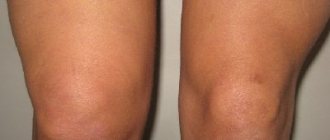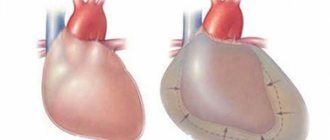Are you familiar with the feeling of burning and itching on your lips? Or the unexpected appearance of bubbles on the skin of the face and lips? 95% of the people on the planet know what I'm talking about. True, not everyone pays due attention to these things. Let's start with the fact that any inflammation of the oral mucosa is called STOMATITIS. But in this article we will talk about the most common disease in the world as a whole, popularly called HERPES. Namely, we will consider herpetic stomatitis, etiology, pathogenesis, clinic and treatment of this disease.
ETIOLOGY OF HERPETIC STOMATITIS
The etiology of herpetic stomatitis is simple. If there is a virus, there are diseases. The virus that causes herpetic stomatitis belongs to the HERPES VIRIDAE family. This family includes about 80 different viruses, and, note, 8 of which cause human illness. Herpetic stomatitis is caused by the herpes simplex virus type 1 (HSV-1), and if it was a congenital or intrauterine (neonatal) infection, then this infection occurred with the herpes simplex virus type 2 (HSV-2).
It would seem that the virus is simple - the infection is simple. But the herpes simplex virus itself is very cunning and insidious. This virus, the herpes simplex virus, has come up with 4 ways of entering the human body:
- Airborne (therefore, it is recommended to avoid people with visible manifestations of the virus);
- Contact (lips affected by herpes are unlikely to give pleasant kisses);
- Transplacental (that is, from mother to child);
- Transfusion (with blood transfusion).
How to distinguish herpes from stomatitis?
Many patients try to find an answer on the Internet to the question: “Do I have stomatitis or herpes? How to recognize? Herpes stomatitis can be easily distinguished from ordinary stomatitis by 3 key signs.
- With herpes infection, the rash is localized in the gum area. Whereas with stomatitis - on the soft tissues of the oral cavity (tongue, cheeks).
- A herpes rash first appears as blisters, which then ulcerate, while stomatitis begins with the appearance of ulcers.
- Herpetic stomatitis is characterized by a stable appearance of the rash in the same places, and with ordinary stomatitis its location often changes.
PATHOGENESIS OF HERPETIC STOMATITIS
The pathogenesis of herpetic stomatitis is quite complex and not fully understood. It is not fully explained by what factors the inner shell of the virus is dissolved, what viral factors allow it to penetrate DNA - human cells, and why the virus, when it is inactive (that is, there are no clinical manifestations) cannot be treated.
However, scientists believe that at the time of infection, the herpes simplex virus attaches to specific receptors on the cell membrane (cells that are sensitive to HSV). Then the fusion of the cell membrane and the outer shell of the virus occurs. At the moment of such penetration, the cell membrane of the cell is not damaged, but the virus seems to bud inside. Then cellular enzymes work, those that dissolve the inner shell of the virus and the “naked” virus penetrates the DNA of the host cell. And the herpes simplex virus can remain in this state for a long time until the provoking factors work.
FACTORS PROVOKING RECURRENCE OF HERPETIC STOMATITIS
Factors that provoke relapse of herpetic stomatitis represent a large group. In principle, herpes can be triggered by anything, from climate change and time zone to ARVI and other infections. And so, the group of factors that provoke a relapse of herpetic stomatitis includes:
- Any change in body temperature (hypothermia is more favored by the herpetic stomatitis virus);
- Decreased immunity (any infection, etc.);
- Trauma to mucous membranes and skin;
- Stress, overwork or overexertion;
- Consumption of alcoholic beverages;
- Smoking;
- Menstruation;
- Change of climate and time zone;
- Taking medications.
As you can see from the lists, there are many factors, and the virus is just waiting for the body to give up. Children from 6 months to one year get sick due to the cessation of protective proteins from the mother. Therefore, let's talk about the prevention of herpetic stomatitis.
PREVENTION OF HERPETIC STOMATITIS
Prevention of herpetic stomatitis should be carried out not only after a person has had symptoms of herpes, but also before birth. That is, work should be carried out with parents both by an obstetrician-gynecologist and a dentist. The simplest rules for preventing herpetic stomatitis are:
- Use of masks;
- Careful hand hygiene;
- Use of personal hygiene products;
- Individual dishes, towels, etc.;
- Bans on kissing;
- Prohibition on tasting food;
- General cleaning of the premises;
- Ventilation;
- Hardening the body;
- Good nutrition;
- Physical activity;
- Timely treatment of common diseases.
But if you or your child come into contact with a person who suffers from herpetic stomatitis, it is recommended to lubricate the oral mucosa with antiviral ointments (for example, acyclovir) for 5 days, or prevention may involve taking interferon.
SYMPTOMS OF HERPETIC STOMATITIS
Knowing the symptoms of herpetic stomatitis is very helpful for timely treatment. That is, it is possible to prevent a vivid clinical picture.
Symptoms of herpetic stomatitis:
- Itching;
- Burning;
- Unpleasant sensation on the mucous membranes of the lips;
- There may be chills;
- Weakness;
- Malaise;
- Headache.
These, you know, are common symptoms that are precursors to the appearance of herpes. However, in the development of herpetic stomatitis there are 4 stages, each of which has its own symptoms.
STAGES OF DEVELOPMENT OF HERPETIC STOMATITIS
The first period or the first stage is the incubation period. This period is NOT clinically manifested.
The second stage of the development of the disease is the prodromal period (it is at this stage that the general symptoms of herpetic stomatitis are observed. Remember that symptoms may vary depending on the severity of the disease, it is written about it below)
The third stage is the period of development - also the period of rashes.
The fourth stage is the period of extinction - the mucous membrane and skin are restored, and the state of health also returns to normal.
CLASSIFICATION OF HERPETIC STOMATITIS
Classification of herpetic stomatitis includes:
- Acute herpetic stomatitis;
- Chronic recurrent herpetic stomatitis;
- Herpetic geometric glossitis;
- Gladiator herpes;
- Acute herpetic infection in newborns;
- Chronic herpetic infection with manifestation in the oral cavity in certain immunodeficiency conditions.
Herpetic stomatitis is also:
- Acute (occurred for the first time);
- Chronic.
ELEMENTS OF HERPETIC STOMATITIS
There is a certain order in which the elements of herpetic lesions appear on the red border of the lips.
First, a papule appears (a painless compaction in the form of a whitish nodule), then a bubble with contents appears (the contents can be transparent, it can be cloudy), after the bubble a crust appears, the crust has disappeared, and a spot appears in its place. And then everything is restored.
When the mucous membrane of the oral cavity is affected, there are some peculiarities. It all starts with a spot, which then turns into a vesicle (bubbles, as I said, can be either with transparent contents or with cloudy content), after the vesicle erosion occurs (hyperemic, painful, sensitive to irritants, an open area of the mucous membrane), which will turn into aphtha ( formation with a rim of redness along the edge of the element, whitish inside). And then again the stain and restoration.
Features of the disease in adults and children
Herpetic stomatitis occurs frequently in children. Children aged 1 to 3 years are especially susceptible to this infectious disease. The reason that the disease is typical only for children lies in the characteristics of children of this age and their fragile immune system.
After a year, breastfeeding usually stops, and therefore the mother’s antibodies stop entering the child’s body. The immune system is under strain from viruses, infections and bacteria, which quickly attack the child upon contact with other children, adults, and exploring the world around him.
Irregular hand hygiene, being in a closed room with carriers of the infection in an open viral form leads to the fact that particles of the herpes virus enter the body of a young patient. The inflammatory process usually occurs in the oral cavity. This is how the disease appears.
Herpetic stomatitis in adults can also manifest itself. However, the immune system of an adult is more developed and stronger. Therefore, the disease usually occurs in a mild form. If in childhood the patient easily suffered from a disease that did not have time to develop into a recurrent form, the disease is unlikely to manifest itself again with frequent frequency. But at an advanced stage, stomatitis will most likely manifest itself again, but not necessarily in a severe form.
According to statistics, approximately 1 in 8 children under the age of three has suffered from herpetic stomatitis at least once. An adult gets it extremely rarely - during periods of recovery from a more serious illness, which has significantly weakened his immunity. The disease manifests itself in no more than 3% of the population, who in childhood experienced the consequences of recurrent oral stomatitis.
ACUTE HERPETIC STOMATITIS
Acute herpetic stomatitis occurs for the first time. And the severity of the infection (from mild to severe) depends, firstly, on the aggressiveness of the virus itself, and secondly, on the host’s immunity. Therefore, in some cases, the infection goes away on its own, as if “self-limiting”: after two weeks, visible clinical recovery occurs, and the incubation period begins again. In other cases, when the immune defense is not very strong, the virus can spread to other organs and systems, leading to the generalization of herpes infection.
Let's consider each form of acute herpetic stomatitis.
Mild form of acute herpetic stomatitis
A mild form of herpetic stomatitis in the prodromal period is characterized by:
- slight increase in body temperature (no more than 37 - 37.5 degrees)
- development of catarrhal gingivitis;
- enlarged lymph nodes;
- duration no more than 1 – 2 days.
The mild form of herpetic stomatitis during the development period is characterized by:
- the appearance of single lesion elements (!the number of bubbles does not exceed the number 5!);
- maintaining hyperemia of the oral mucosa;
- preservation of enlarged lymph nodes.
- The duration of the period is 1-2 days.
A mild form of herpetic stomatitis during the period of extinction is characterized by:
- By reducing all elements of the lesion in size, their healing occurs (epithelialization),
- Normalization of the size of lymph nodes;
- Normalization of body temperature;
- Reducing mucosal hyperemia
- The period is longer.
2) Moderate form of herpetic stomatitis
The average form of herpetic stomatitis in the prodromal period is characterized by:
- Appearance of weakness, sleep disturbances, appetite disorders;
- Increased body temperature to 37.5 degrees;
- Increased size of lymph nodes.
The average form of herpetic stomatitis during the development period is characterized by:
- Chills, weakness, headache;
- Increased body temperature to 39 degrees;
- The presence of up to 25 elements of damage;
- Generalized catarrhal gingivitis;
- Bleeding gums;
- Increased salivation.
The average form of herpetic stomatitis during the period of extinction is characterized by:
- Restoring general well-being;
- Normalization of the size of lymph nodes;
- Healing of lesions.
3) Severe form of acute herpetic stomatitis
The severe form of acute herpetic stomatitis is less common than other forms and occurs in people with very weak immunity. Most often with severe immunodeficiencies.
The severe form of herpetic stomatitis in the prodromal period is characterized by:
- Apathy;
- Headache;
- Skin and muscle changes such as hyperesthesia may be observed;
- Changes in the cardiovascular system such as bradycardia, tachycardia, hypotension;
- Nausea, vomiting, bleeding from the nose and throat;
- Inflammation of the lymph nodes not only in the jaw area, but also in the neck.
The severe form of herpetic stomatitis during the development period is characterized by:
- Body temperature is more than 39 degrees;
- The oral mucosa is swollen and hyperemic;
- There is dryness of the lips, possible cracking;
- The number of damage elements is more than 100!
- Ulcerative gingivitis;
- Increased salivation with blood.
The severe form of herpetic stomatitis during the period of extinction depends on the body’s immunity and often complete and high-quality healing does not occur.
CHRONIC RECURRENT HERPETIC STOMATITIS
Like acute herpetic stomatitis, chronic recurrent herpetic stomatitis goes through 4 stages of the disease and has three forms. The only difference is that the form of chronic recurrent herpetic stomatitis is determined not by the number of lesions (up to 5, up to 25 or more than 100), but by the frequency of occurrence per year.
The mild form of chronic recurrent herpetic stomatitis is characterized by the occurrence of lesions 1 – 2 times every 3 years;
The average form of chronic recurrent herpetic stomatitis is characterized by the occurrence of lesions 1 – 2 times a year;
The severe form of chronic recurrent herpetic stomatitis is characterized by the occurrence of lesions 4 or more times a year.
In chronic recurrent herpetic stomatitis, single or group elements of the lesion are detected, most often in the form of small blisters, which then appear, forming erosions. The mucous membrane is swollen and hyperemic. In severe cases of chronic recurrent herpetic stomatitis, a deterioration in the patient’s general well-being, headache, weakness, and body temperature of more than 39 degrees are added.
DIFFERENT DIAGNOSTICS OF HERPETHIC STOMATITIS
Differential diagnosis of herpetic stomatitis is carried out with chronic aphthous stomatitis, with exudative erythema multiforme, and with pemphigus vulgaris.
If we compare herpetic stomatitis and chronic aphthous stomatitis, then both lesions have aphthae. However, with aphthous stomatitis they are single, round, covered with a whitish coating and surrounded by a halo of hyperemia, there is no catarrhal gingivitis, the lymph nodes are not enlarged, and there is no elevated body temperature.
The differences between herpetic stomatitis and exudative erythema begin with the time of year. Most often, erythema occurs in autumn and spring and immediately begins to become difficult. That is, it is characterized by total damage to the mucous membrane, hyperemia, and edema. Erosions and ulcers are large, massive hemorrhagic crusts on the red border of the lips, cracks. The general condition also suffers: body temperature more than 40 degrees, weakness, malaise, multiple bluish spots (cockades) on the skin of the hands.
The difference with pemphigus vulgaris is that with pemphigus there are erosions that are slightly painful, located on the visually healthy mucous membrane of the oral cavity.
How to distinguish herpes sore throat from stomatitis?
Despite the fact that these medical terms have the same grammatical root, herpetic sore throat and herpetic stomatitis are two different diseases. Unlike stomatitis, herpes sore throat occurs not due to the penetration of the herpes virus, but as a result of an adenovirus infection (in particular, the Coxsackie A virus). Children are more likely to suffer from this disease than adults. The rashes are localized, for the most part, on the soft palate and tonsils. Typical symptoms of stomatitis include pain in the abdomen and abnormal bowel movements.
Attention!
The disease begins acutely, with a jump in temperature to 40 degrees, and is severe, so differential diagnosis should only be carried out by a doctor.








